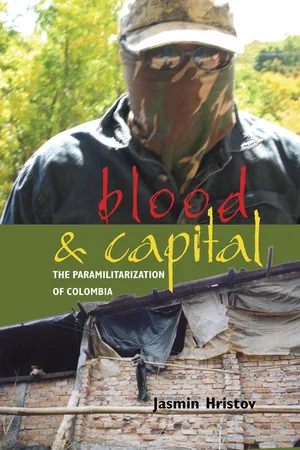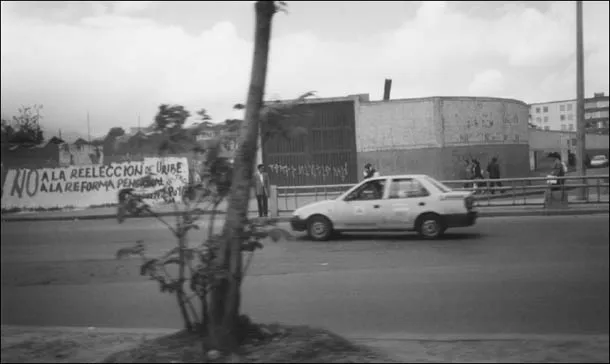![]()
Chapter 1
Neoliberalism or Neopoverty?
The Promises and the Reality of the Neoliberal Agenda
Renamed as Neoliberalism, the historic crime in the concentration of privileges, wealth, and impunities democratizes misery and hopelessness.
—EZLN, 1996
The struggle against neoliberalism is not only about the material necessities of the working population. It is also about the affirmation of their self-worth, dignity–and capacity to govern themselves, to become full human beings without the constant threat of abuse, hunger, and fear.
—Henry Veltmeyer, Neoliberalism and Class Conflict in Latin America
Origin, Components, and New Faces
Neoliberalism can be described as a system of policies that promotes the interests of private enterprises by eliminating any remaining barriers to capital’s search for resources, labor, and markets. The essential components of neoliberalism are trade liberalization, privatization, deregulation, and austerity. Trade liberalization entails the removal of any trade barriers, such as tariffs and quotas. Privatization requires the sale of public enterprises and assets to private owners. Through the removal of government restrictions and interventions on capital, deregulation allows market forces to act as a self-regulating mechanism. This process can take the form of labor or financial deregulation, for example. Austerity requires the drastic reduction or elimination of expenditures for social programs and services.1 The neoliberal ideology closely resembles neoclassical economics, particularly in its emphasis on a minimal state and free markets, including free trade and the free movement of capital. It advocates the primacy of individualism, outward orientation, and state contraction and criticizes social programs for their anticompetitive and antientrepreneurial consequences.2
These beliefs provided the basis for many of the economic and political programs that the governments of the United States, Britain, and other European countries undertook to dismantle their welfare systems. The main cause that led to the official adoption of neoliberal policies by the developing countries in Latin America and elsewhere was the pressure to service their external debts in the late 1970s. In order to receive loans from the World Bank (WB) or the International Monetary Fund (IMF), nations had to agree to a program of structural adjustment that included drastically reducing public spending in health, education, and welfare; cutting wages or severely constraining their rise; liberalizing trade and promoting export-oriented growth; removing restrictions on foreign investment; devaluating the local currency; privatizing state enterprises; and embarking on radical deregulation of the labor market.3
The core of the neoliberal program implemented in Latin American nations—austerity, trade liberalization, privatization, and deregulation—was directly advocated by the U.S. Institute for International Economics (IIE) in its publication Toward Renewed Economic Growth in Latin America (1986). In 1989 the institute came up with a renewed list of reforms that came to be referred to as the Washington Consensus; it consisted of fiscal restraint, public expenditures in fields with high economic returns, tax reform, financial liberalization, a competitive exchange rate, trade liberalization, the removal of barriers to foreign investment, the privatization of state-owned enterprises, deregulation, and security for property rights.4
By the early 1990s the Washington Consensus was already under serious challenge from academic circles, civic organizations, and social movements. As a result, a new line of thinking in development emerged, the Post-Washington Consensus (PWC), which claimed to represent a shift away from hard-core liberalism toward a focus on effective institutions, the building of social capital and capacity, and financial regulation. While pro-neoliberal academics and policymakers portray the PWC as giving priority to sustainable, equitable, and democratic development by creating a more poverty focused approach that prioritizes social spending, neoliberalism’s critics uncover the continuities between the original and new versions of the neoliberal agenda. The latter articulate well the PWC’s main limitations, which primarily have to do with the inability or unwillingness to address major issues pertaining to power distribution at local and international levels as well as the attempt to overcome the deficiencies of the original neoliberal model by taking the existing power structures as a given.5
Neoliberalism affects Latin American nations through external forces (those coming from advanced countries and international institutions) in the form of foreign investment, imports, international trade laws, and debt-servicing pressures as well as internal forces (those originating within the country, although conditioned by foreign influences) in the form of macroeconomic policies. As has been well documented, all these forces jointly aggravate the inequality generated at the international level, which is matched by an internally generated inequalities. The neoliberalization of Latin American nation-states themselves is evident in their lack of interference in profit-making processes to redistribute surpluses and the absence of regulation over transnational capital in their territories.6 Thus, the intensifying transfer of resources from the public to the private sphere and the concentration of economic and decision-making power in a few corporate and individual hands, is left unobstructed. As a result, the growing freedom of the market offers opportunities to the already economically dominant groups—such as multinational corporations (MNCs), local capitalists, and financial bodies—while further impoverishing the low-income population.
There is plenty of evidence that market-oriented restructuring has exacerbated existing poverty, created additional poverty, impeded social development by turning basic human rights (such as the right to clean water and education) into commodities, and destroyed sustainable livelihoods by granting corporations unprecedented license. In many cases economic liberalization has produced landlessness, pushed down wages, eroded labor rights, increased unemployment and informal-sector work,7 and reduced the access of the low-income population to essential public services.
Development from Above:
Implementing the Neoliberal Agenda in Colombia
In the late twentieth century, Colombia was in a slightly different position than many of its neighbors in that it had a relatively low level of debt, so major neoliberal restructuring did not begin until 1990, under President César Gaviria Trujillo (1990–94), when the country began to receive massive amounts of U.S. military aid. The initial reforms, willingly promoted by the Colombian elite, included reduction of import tariffs, reduction of government subsidies for certain sectors of the economy, reduction of government control over direct foreign investment, and the creation of flexibility in the labor market. In addition to the significant social damage wrought by these policies, by the mid-1990s Colombia had to almost double its borrowing from the IMF because of the economic crisis brought on by the market liberalization that accompanied the intensification of the country’s integration into the global economy. The presence of MNCs, especially in coal, oil, and ferronickel extraction played a large role in this process. Other key Colombian exports to U.S. and European markets include cut flowers, cotton, beef, seafood, emeralds, oil, and illegal drugs.8
President Uribe, who came to power in 2002 and was reelected in 2006, has taken the neoliberalization of the country to its extreme. Uribe’s administration has been systematically removing poor inhabitants from existing and potential oil fields in order to enable further oil extraction by U.S.-based MNCs. Entire villages whose presence prevents the successful exploitation of natural resources continue to be evicted through campaigns of terror (see chapters 3 and 4). For instance, in 2002 over a thousand people on average were displaced each day from areas of untapped oil and gas reserves.9 Moreover, the Colombian government has been calling for national and foreign investors to exploit the forest corridor south of the Meta River, promising concessions to MNCs. There are already plans for the building of canals, ports, and other megaprojects that are likely to displace the indigenous communities inhabiting the area.10
Trade liberalization, another component of the market-friendly model, has destroyed the livelihood of many small-scale farmers through the withdrawal of access to credit and other government support, the removal of price guarantees, the elimination of the few surviving national agrarian institutions, the establishment of agribusinesses using capital-intensive technology brought in by foreign investors, and the replacement of previously locally produced crops with imported products.11 Consequently, many peasants have been indirectly displaced and forced to flee into the already crowded slums in large cities, where, deprived of their dignity and denied their basic human rights, they carry on a precarious existence. This pattern can be found in much of Latin America.
Figure 1.1. A graffito on a street in Bogotá reads, No to the Reelection of Uribe; No to Pension Reform.
Simultaneous with trade liberalization and the increase in foreign investment, a thorough privatization of Colombia’s public resources and service providers, along with a significant downsizing of national enterprises, has been underway. In January 2003 the IMF provided $2.1 billion for two years on the condition that the country furthers neoliberal reforms. Subsequently, the president privatized one of the country’s largest banks (BANCAFE), restructured the pension program, and reduced the number of public-sector workers in order to cut budget deficits, as required by the international lending institution.12
Uribe also closed down some of the country’s biggest public hospitals, eliminating over four thousand medical jobs, and denationalized companies in the telecommunications, oil, and mining sectors. For example, in the summer of 2003 the government shut down the public telecommunications company TELECOM and as a result five thousand full-time unionized workers were laid off. Later, TELECOM resumed its activities, but as a private business whose workforce consists primarily of nonunionized temporary workers.13 In January 2004 the national mining company MINERCOL and the Union of Colombian Mine Workers (Sindicato de Trabajadores de la Minería en Colombia, or SINTRAMINERCOL) were abolished and a new mining code that allows foreign investors to take over small-scale miners’ claims was developed.14 In addition to liquidating the state-owned oil company, ECOPETROL, Uribe lowered the royalties that foreign oil corporations must pay Colombia. On January 30, 2004, the Colombian government adopted a resolution whereby, through the privatization of other large public companies, it planned to eliminate around forty thousand jobs in four years.15 As a result of the implementation of privatization and austerity measures, there have been drastic cuts in public-sector salaries and stable employment, reduction in the access of the low-income population to basic services such as health and education, deterioration in working conditions, and increasing attacks on labor unions. Even though the United States was unsuccessful in establishing the Free Trade Area of the Americas (FTAA), it has switched to seeking bilateral agreements with several Latin American countries, including Colombia.
Figure 1.2. Bogotá graffito: No to the FTAA.
Although nearly 50 percent of Colombian citizens oppose a free trade pact with the United States, President Uribe has been taking part in the negotiations for the U.S.-Andean regional free trade accord since May 2004 and in early 2006 expressed his commitment to advance the deal. In January 2008 President George W. Bush called on the U.S. Congress to approve a proposed free trade agreement (FTA; tratado de libre comercio, TLC) with Colombia, which has accepted the treaty. Because of concerns over the high level of violence against labor activists and impunity for human rights violators in Colombia as well as the possible disadvantages for American workers, congressional Democrats opposed the deal. However, in March 2008 Democrat and Speaker of the U.S. House of Representatives Nancy Pelosi stated that she might consider voting for the FTA if President Bush agreed to facilitate the implementation of the Trade Adjustment Assistance Act to aid American workers affected negatively by the trade deal. As of July 2008 ratification of the agreement was still pending. While the implementation of major components of the neoliberal agenda, such as trade liberalization and privatization, have already been underway, this FTA would expand and broaden such reforms for the benefit of the United States and the local elite. For example, the clauses on agriculture would grant the United States benefits worth more than $600 million while Colombia would enjoy no more than $1 million in benefits. In the sphere of intellectual property, MNCs would be guaranteed a twenty-five- to thirty-year monopoly on medicines, veterinary supplies, and seeds. Water rights and basic sanitation, health, communication, and energy services would be in the hands of private enterprises, which would provide these services only...


